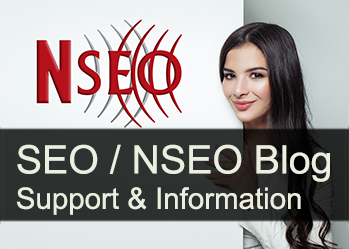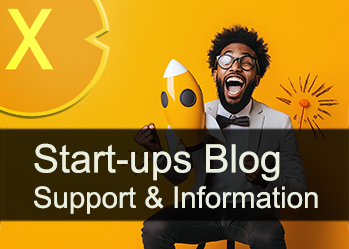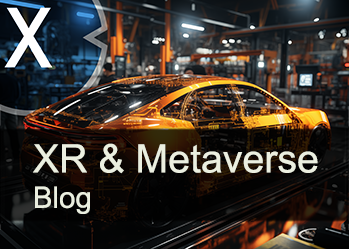Google AI Mode 2025 – Questions and Answers
Xpert pre-release
Language selection 📢
Published on: October 10, 2025 / Updated on: October 10, 2025 – Author: Konrad Wolfenstein
Search as we knew it is over: When and how you can use AI Mode
The crucial difference: Why Google's AI Mode is far more than previous AI answers
Google is resolutely pushing ahead with the transformation of its search from a list of links to an AI-powered dialog interface. AI Mode is the central building block – initially as a tab next to "Images," "News," and "Shopping," but increasingly as a standalone search interface that understands complex, multi-part queries, performs agent-like searches in the background, and summarizes results multimodally. The rollout has been rapidly expanded since March 2025: initially as a Labs experiment in the US, then as a regular tab without Labs opt-in in the US and India, subsequently in English in 180+ countries, and since September 2025 with additional languages worldwide. At the same time, the tab is not visible for every search query; measurements show a gap of approximately 16–20% of queries in which the AI Mode tab does not yet appear, with this gap tending to close as integration progresses.
Suitable for:
- The new Google AI mode: Like ChatGPT, Google becomes an answering machine – AI Mode EU rollout on the night of October 8, 2025
What is Google AI Mode and why is Google introducing it?
The central idea: AI Mode is a search interface for open-ended, exploratory questions that go beyond the classic "10 blue links." Instead of simply listing sources, AI Mode generates a self-contained, detailed answer—with references and a right-hand sidebar with source cards—and allows for follow-up questions in a chat-like flow. The interface appears more comprehensive than today's AI overviews and encourages multi-level exploration.
AI Mode addresses questions that require consultation, comparison, planning, or a comprehensive overview. Technically, Google relies on a "query fan-out" logic: A user question is broken down into subquestions, parallel web and index queries are initiated, and data from various sources (including maps, product data, news, and community forums) is combined and synthesized into a coherent answer. This process-based research represents a significant departure from the static ranking of individual documents.
In short, AI Mode attempts to take over the step users previously had to take with multiple searches, comparisons, and context switches. In Google's words, AI Mode is "particularly useful for queries that require further exploration, reasoning, or comparison."
How does AI Mode differ from AI Overviews and classic search?
Key differences lie in the interface, functional logic and source selection:
- Interface: AI Overviews are an AI block above the organic results; AI Mode is a dedicated tab with a full-screen answer, a source card on the right, and a continuous dialog. AI Mode acts like an integrated, persistent research environment, not a standalone plug-in.
- Functional logic: AI Overviews enrich the SERP with an AI summary. AI Mode, on the other hand, initiates a multi-stage process, including follow-up questions, storable contexts (e.g., in Canvas), and multimodal inputs (text, voice, image, live video) – thus approaching an "agent" paradigm optimized for tasks and processes rather than individual queries.
- Sources and overlap: Studies show little URL overlap between AI Overviews and AI Mode, with a curated, sometimes different source selection and heavy use of maps in local contexts. Tests included fewer, but more targeted, sources; the exact URL overlap between systems was only around 10% in an SE ranking sample, suggesting an independent source logic.
- Interaction and persistence: AI Mode invites follow-up questions, comparisons (“Ask about any items”), planning (Canvas), sharing results (Share Links), and re-entering ongoing research – a longer-term usage pattern that classic SERPs do not support.
What role does Gemini 2.5 Pro play in AI Mode?
AI Mode is powered by Google's Gemini family. A particularly notable feature is the inclusion of Gemini 2.5 Pro for subscribers to Google AI plans—this model is considered Google's most advanced in the areas of logical reasoning, mathematics, and programming. In AI Mode, eligible users can access this model; otherwise, the tab operates with a standard model that provides quick, robust help for most questions. Google emphasizes that 2.5 Pro in AI Mode offers "the most advanced reasoning capabilities," including step-by-step solutions to complex problems and accompanying learning links. The full performance level (2.5 Pro) is therefore a premium component, but AI Mode generally works without this level.
Since when has AI Mode been around and how did the rollout go?
The key data of the rollout:
- March 2025: Launched as an experimental feature at Search Labs (US). At the same time, multimodal capabilities were emphasized: Users could take/upload images and receive AI-assisted answers. The system combined Google Lens with a Gemini variant.
- May 2025: Announcement of expansion in the US outside of Labs. During this time, Google also tested a homepage variant with an "AI Mode" button (sometimes instead of "I'm Feeling Lucky!"), signaling increasing integration into the main interface.
- June 2025: Sightings outside of Labs in the US; AI Mode also gained the ability to create analyses with visualizations for questions about stocks/funds. As of the end of June, AI Mode was accessible in the US without logging in or opting in to Labs, even in incognito mode. Additionally, AI Mode launched as a Labs experiment (English) in India and the UK. Data appeared in Search Console, but was not separately reportable as an AI Mode segment, but was recorded in normal search data.
- August 2025: Expansion to 180+ countries and territories (English); link sharing for AI-mode replies (revocable sharing links). This allowed others to jump in on the reply, ask follow-up questions, and continue the conversation.
- September 2025: Global expansion to additional languages: Spanish, Hindi, Indonesian, Japanese, Korean, and Brazilian Portuguese. Simultaneously, testing AI-generated product summaries in AI Mode product panels and expanding travel planning features.
The expansion strategy communicated by Google is therefore a gradual rollout via Labs experiments, US deployment, India/UK and finally international availability in English and other languages.
B2B support and SaaS for SEO and GEO (AI search) combined: The all-in-one solution for B2B companies

B2B support and SaaS for SEO and GEO (AI search) combined: The all-in-one solution for B2B companies - Image: Xpert.Digital
AI search changes everything: How this SaaS solution is revolutionizing your B2B rankings forever.
The digital landscape for B2B companies is undergoing rapid change. Driven by artificial intelligence, the rules of online visibility are being rewritten. It has always been a challenge for companies to not only be visible in the digital masses, but also to be relevant to the right decision-makers. Traditional SEO strategies and local presence management (geomarketing) are complex, time-consuming, and often a battle against constantly changing algorithms and intense competition.
But what if there were a solution that not only simplifies this process, but makes it smarter, more predictive, and far more effective? This is where the combination of specialized B2B support with a powerful SaaS (Software as a Service) platform, specifically designed for the needs of SEO and GEO in the age of AI search, comes into play.
This new generation of tools no longer relies solely on manual keyword analysis and backlink strategies. Instead, it leverages artificial intelligence to more precisely understand search intent, automatically optimize local ranking factors, and conduct real-time competitive analysis. The result is a proactive, data-driven strategy that gives B2B companies a decisive advantage: They are not only found, but perceived as the authoritative authority in their niche and location.
Here's the symbiosis of B2B support and AI-powered SaaS technology that is transforming SEO and GEO marketing and how your company can benefit from it to grow sustainably in the digital space.
More about it here:
Rethinking SEO: How to become a building block for Google's AI answers
Does the AI Mode tab appear on every search query?
No. Measurements from a dataset of 3,049 queries (provided by Nozzle, analyzed by Brodie Clark) show that the tab is frequently, but not universally, displayed. In the US, visibility was observed at around 84% on desktop and 80% on mobile, leaving a gap of approximately 16–20% where the tab doesn't appear at all. The expectation in the SEO community is that this gap will narrow as integration progresses.
In practice, this means that AI Mode is being aggressively pushed, but is not yet active by default for all query types. Google controls the trigger logic based on query intent, context, and presumably quality or risk parameters.
Suitable for:
- Google AI Mode (Not AI Overviews!) | Google's new AI search is coming: Why websites could lose up to 64% of their traffic
What new features and interactions does AI Mode offer beyond traditional search?
Feature evolution is fast, examples 2025:
- Multimodality: Upload/photography via camera (lens-assisted), later also PDF uploads and questions. On mobile devices, "live" voice interaction is added, as well as "Search Live" (video) based on Project Astra. Overall, "What is a query?" is shifting from text to context (gaze, location, screen area).
- Query fan-out and agentics: A single question triggers a cascade of sub-searches. AI Mode behaves like an embedded research agent, not a ranking selector. This results in summaries that combine multiple data sources, maps, forums, and product feeds.
- Comparison modes: "Ask about any items" – an interaction where users can check off products or local listings and directly compare them. This supports structured comparisons in a dialog flow.
- Visual Analytics: Data visualizations/charts initially for stock/fund questions – with trends, comparisons, and intervals. This indicates an expansion of analytical modules within the tab.
- Planning support: Canvas for projects/studies – notes, files, gradual refinement via sessions. Travel planning with daily schedules, hotels, tickets, and restaurants in a seamless flow without leaving the interface.
- Agentic actions: In the Ultra/Advanced tier, tests for action support such as restaurant reservations; AI Mode checks availability and links to the booking. This is complemented by personalization based on preferences and past interactions.
- Sharing and continuing: Link sharing allows you to share conversations and continue them at the same point with follow-up questions – collaborative exploration.
These features indicate that AI Mode not only aggregates answers, but also integrates task flow and collaboration into search.
How does AI Mode select sources – and how volatile are the results?
SE ranking analyses show that AI Mode uses different patterns than organic results and AI Overviews. The results are volatile, the source curation logic is independent, and only partially overlaps with traditional rankings. Furthermore, AI Mode often refers to a targeted, reduced number of sources—with a strong presence of trusted domains depending on the topic—and noticeably frequently uses Google Maps links as a "front door" for action steps for local intentions.
The conclusion: Classic "ranking optimization" isn't enough to be present in AI mode. What counts is becoming one of the "trusted building blocks" of an answer: expertise, clarity, data depth, structured signals, reputation evidence—and suitable formats for multimodal/comparative contexts.
Which languages and regions are currently covered?
As of October 2025:
- USA: First Labs experiment (March/April), from mid-June without Labs opt-in (also incognito/without registration).
- India, UK: Labs experiment in English (from the end of June), shortly afterwards without Labs opt-in in India.
- Global: Available in English in 180+ countries/regions starting at the end of August.
- Additional languages: Globally available in Spanish, Hindi, Indonesian, Japanese, Korean, and Brazilian Portuguese since September 2025. Google confirmed the expansion to additional languages/regions in early October.
The European markets outside of Labs have been gradually included; individual reports speak of availability in Germany/EU from the beginning of October, but Google itself communicates the global steps across 180+ regions (English) and subsequent language waves.
Is AI Mode already the “default search” – or will it remain a tab?
Formally, "All" remains the default. However, many SEOs have observed that AI Mode is consistently integrated as a standalone search interface and receives UI anchors on the homepage, address bar (Chrome tests), app interface (Magnifying Glass → AI Mode), as well as cross-entry points from Lens/Circle to Search. In addition, aggressive prompts such as "Dive deeper with AI Mode" appear in AI Overviews. This promotes a gradual habituation to AI Mode as the main interaction space—a "soft launch" across multiple touchpoints.
Your global marketing and business development partner
☑️ Our business language is English or German
☑️ NEW: Correspondence in your national language!
I would be happy to serve you and my team as a personal advisor.
You can contact me by filling out the contact form or simply call me on +49 89 89 674 804 (Munich) . My email address is: wolfenstein ∂ xpert.digital
I'm looking forward to our joint project.
☑️ SME support in strategy, consulting, planning and implementation
☑️ Creation or realignment of the digital strategy and digitalization
☑️ Expansion and optimization of international sales processes
☑️ Global & Digital B2B trading platforms
☑️ Pioneer Business Development / Marketing / PR / Trade Fairs
Our global industry and economic expertise in business development, sales and marketing

Our global industry and business expertise in business development, sales and marketing - Image: Xpert.Digital
Industry focus: B2B, digitalization (from AI to XR), mechanical engineering, logistics, renewable energies and industry
More about it here:
A topic hub with insights and expertise:
- Knowledge platform on the global and regional economy, innovation and industry-specific trends
- Collection of analyses, impulses and background information from our focus areas
- A place for expertise and information on current developments in business and technology
- Topic hub for companies that want to learn about markets, digitalization and industry innovations
























